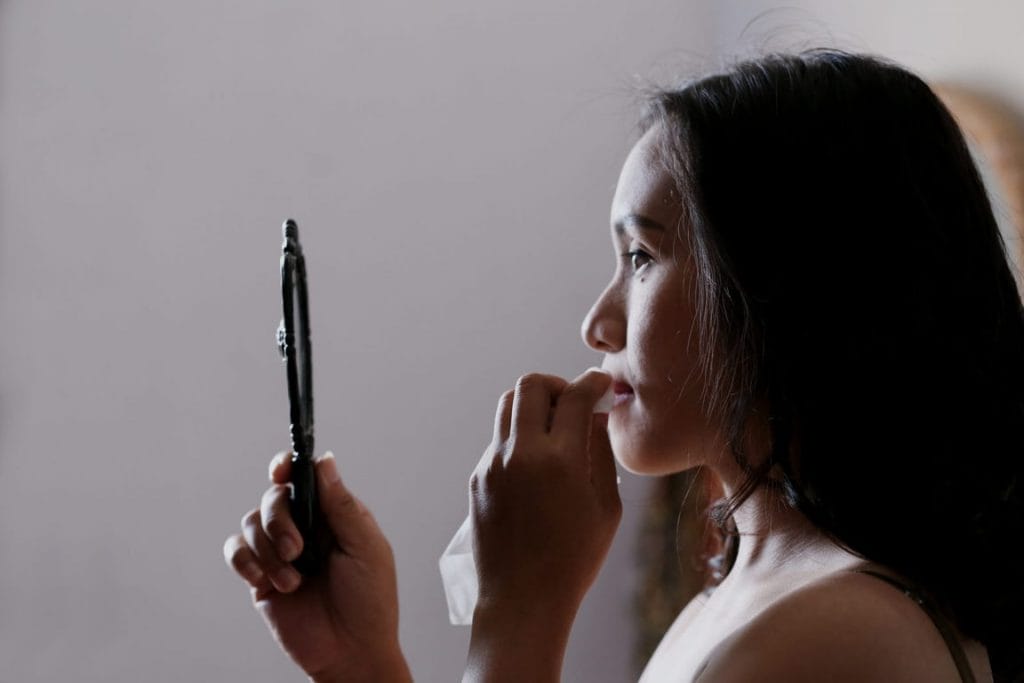Skincare 101: What’s the Correct Order of Skincare?
Is the skincare order of application confusing the hell out of you? Don’t worry, let Tropika Club guide you through all these confusion. With so many beauty products flooding the market, the sequencing of applying skincare during different times of day can be really confusing to many. In fact, many people do it wrongly, while others simply give up and just use one application.
From glycolic acid to vitamin C serums to retinol and much more, for a whole lot of us that our skin care regimen is no more a case of just cleansing and moisturising. Therefore, in the event that you end up being confused, we have the advice for you.
Table of Contents
No Time to Read? Here’s a Snappy Summary of This Article
- 1. Cleanser: Morning and Night Please remove your makeup and wash your face before applying any products.
- 2. Toner: Morning and/or Night
- 3. Serum: Morning and/or Night
- 4. Eye Cream: Morning and/or Night
- 5. Spot Treatment: Morning or Night (Preferred)
The sequence of skincare varies between skin types
The sequencing of skincare application actually depend upon the skin type, and that’s why when reading sites and internet articles you need to remember that the individual writing may have completely different skin needs for you. For instance, dry and responsive skin won’t require a toner and oils are not suited to each skin. A fantastic way to remember the way to coating merchandise is: thinner, water-based products followed by oil-based, thicker goods, and always finish with SPF or sunblock during daytime. Taking care of your skin is essential to maintain a healthy and youthful complexion. However, not all skin is created equal, and different skin types have different needs. One of the most critical aspects of a skincare routine is the order in which you apply the products. The sequence of skincare can affect the effectiveness of the products and how well they are absorbed into your skin.
Skin Types
There are several skin types, each with different characteristics that determine the sequence of skincare. Here are the most common skin types:
- Normal skin
- Oily skin
- Dry skin
- Combination skin
- Sensitive skin

Daytime skincare sequencing
Cleanser
When it comes to skincare, using a cleanser is an essential step in any skincare routine. Here are some important points to keep in mind when using a cleanser:
- Cleansing helps remove dirt, oil, and impurities from the skin, which can lead to breakouts and other skin problems if left unaddressed.
- It’s important to choose a cleanser that is appropriate for your skin type, whether it’s oily, dry, or sensitive.
- It’s also important to be gentle when cleansing your skin, as being too rough can cause irritation and damage.
- Finally, it’s important to use the right amount of cleanser and to rinse thoroughly to ensure that all traces of the cleanser are removed from the skin.
Toner
If you’re looking to step up your skincare game, you might be considering adding a toner to your routine. Toners are liquid products that are applied after cleansing and before moisturizing, and they can help to balance your skin’s pH levels, minimize the appearance of pores, and provide a range of other benefits depending on the specific formula you choose.
Here are some things to know about using a toner for skincare:
- Choose a toner that is right for your skin type: Toners come in a variety of formulas, so it’s important to choose one that is tailored to your specific skin type and concerns. For example, if you have dry skin, you may want to look for a toner that contains hydrating ingredients like hyaluronic acid or glycerin.
- Apply your toner correctly: To apply your toner, simply dampen a cotton pad with the product and swipe it over your face, avoiding your eye area. You can also use your hands to pat the toner into your skin.
- Don’t overdo it: While toners can be beneficial for your skin, it’s important not to overuse them, as this can lead to dryness and irritation. Try using your toner once or twice a day, and pay attention to how your skin responds.

Serums
concerns. They are designed to deliver high concentrations of active ingredients directly to the skin and are often used in conjunction with other skincare products. Here are some things to know about using a facial serum for skincare:
What is a Facial Serum?
A facial serum is a lightweight, fast-absorbing skincare product that is formulated with a high concentration of active ingredients. These ingredients can vary depending on the specific serum but often include antioxidants, vitamins, and peptides. Serums are typically applied after cleansing and toning the skin but before moisturizing.
How to Use a Facial Serum
When using a facial serum, it is important to follow the instructions provided with the product. In general, here are the steps to follow:
- Cleanse and tone your skin
- Apply a small amount of serum to your face and neck, avoiding the eye area
- Gently massage the serum into your skin using upward and outward motions
- Wait a few minutes for the serum to absorb before applying moisturizer
Moisturiser, Lotions or Oils
When it comes to taking care of your skin, moisturising is a crucial step. But with so many products on the market, it can be overwhelming to figure out which one to use. Here are some factors to consider:
Skin Type Matters
Your skin type is a critical factor in determining the type of moisturiser or lotion to use. Here are the three main skin types and what to look for in a moisturiser:
- Dry skin: If your skin is dry, look for a rich, creamy moisturiser that contains ingredients such as hyaluronic acid or glycerine. Oils such as argan oil or jojoba oil can also help hydrate and nourish dry skin.
- Oily skin: If your skin is oily, look for a lightweight, oil-free moisturiser that won’t clog your pores. Look for products labelled “non-comedogenic,” which means they won’t cause acne or breakouts.
- Combination skin: If you have combination skin, you’ll want to find a moisturiser that can hydrate dry areas without making oily areas greasy. Look for lightweight, oil-free products that contain hyaluronic acid or glycerine.
Lotions vs. Oils
In addition to moisturisers, lotions and oils are also popular skincare products. Here are some things to keep in mind when deciding which one to use:
- Lotions: Lotions are lightweight and easy to spread. They’re ideal for everyday use and can be applied quickly. They’re also great for oily skin because they’re absorbed quickly and don’t leave a greasy residue.
- Oils: Oils are thicker than lotions and take longer to absorb. They’re great for dry skin because they’re deeply hydrating and provide a protective barrier to prevent moisture loss. However, they can be too heavy for oily skin and may cause breakouts.
Sun Block or Sun Screen
Sunscreen is an essential skincare product that helps protect your skin from the harmful UV rays of the sun. Here are some key points to keep in mind:
What is Sunscreen? Sunscreen is a skincare product that protects your skin from the harmful UV rays of the sun. It contains ingredients that absorb or reflect the sun’s ultraviolet radiation and prevent it from penetrating your skin.
Why is Sunscreen Important? The sun’s UV rays can damage your skin, leading to premature aging, dark spots, and even skin cancer. Sunscreen helps protect your skin from these harmful rays and reduces the risk of skin damage and cancer.
How to Use Sunscreen?
Here are some tips to keep in mind when using sunscreen:
- Apply sunscreen at least 20-30 minutes before going outside to allow it to absorb into your skin properly.
- Use a broad-spectrum sunscreen that protects against both UVA and UVB rays.
- Apply sunscreen generously to all exposed areas of your skin, including your face, neck, and arms.
- Reapply sunscreen every 2 hours, or more frequently if you’re sweating or swimming.
Read Also:
All you need to know about Skin Hyper Pigmentation
_

Skincare sequence during the evenings
Cleanser
When it comes to skincare routines, using a cleanser is an important step that should not be skipped. Cleansing your face at night helps to remove makeup, dirt, and oil that may have accumulated during the day. Here are some things to consider when using a cleanser for your nighttime skincare routine:
- Choose the right cleanser for your skin type: Different cleansers are formulated for different skin types. For example, if you have oily skin, you may want to choose a foaming cleanser that can help to remove excess oil. If you have dry or sensitive skin, a cream or lotion cleanser may be more gentle.
- Wash your face before bed: It’s important to wash your face before going to bed to remove any makeup, dirt, or oil that may have accumulated during the day. This helps to prevent clogged pores and breakouts.
- Be gentle: When using a cleanser, be gentle and don’t rub too hard. Rubbing too hard can cause irritation and damage to your skin. Instead, use your fingertips to massage the cleanser onto your face in a circular motion.
Using a cleanser as part of your nighttime skincare routine can help to keep your skin clean and healthy. By choosing the right cleanser for your skin type, washing your face before bed, and being gentle, you can help to achieve a clear and glowing complexion.
Mask
Using a facial mask as part of your nightly skincare routine can provide numerous benefits for your skin. Here are some of the advantages of incorporating a facial mask into your skincare regimen:
1. Provides deep cleansing Facial masks are designed to penetrate deep into the skin to remove impurities and unclog pores. By using a mask, you can ensure that your skin is thoroughly cleansed and free of any dirt, oil, or makeup residue that may have accumulated throughout the day.
2. Helps to nourish and hydrate the skin Facial masks can also provide hydration and nourishment to the skin. Many masks are formulated with ingredients such as hyaluronic acid, vitamin E, and other moisturizing agents that can help to plump and hydrate the skin.
3. Can help to improve skin texture and tone By using a facial mask regularly, you can help to improve the texture and tone of your skin. Masks can help to reduce the appearance of fine lines, wrinkles, and other signs of aging, as well as improve the overall radiance and clarity of the skin.
Retinol
Retinol is a derivative of vitamin A that is commonly found in skincare products. It is well-known for its anti-aging benefits, such as reducing fine lines and wrinkles, as well as improving skin texture and tone. Here are some key points to keep in mind when using a retinol serum in your nighttime skincare routine:
What is retinol serum? Retinol serum is a skincare product that contains retinol as the active ingredient. It is usually applied to the face at night and left on overnight to work its magic.
How to use retinol serum? It is important to use retinol serum properly to avoid irritation and maximize its benefits. Here are some tips:
- Start by using a low concentration of retinol and gradually work your way up to higher concentrations.
- Apply retinol serum to clean, dry skin after cleansing and toning.
- Use a small amount and avoid applying it near the eyes or on sensitive areas of the face.
- Wait a few minutes before applying other skincare products on top of the retinol serum.
- Always use a sunscreen during the day, as retinol can make the skin more sensitive to the sun.
Serum
If you’re looking to take your skincare routine to the next level, incorporating a treatment serum into your nighttime routine is a great way to do it. Treatment serums can help target specific skincare concerns, such as fine lines, dark spots, and uneven texture, and they can help improve the overall appearance and health of your skin.
Here are some things to keep in mind when using a treatment serum in your nighttime skincare routine:
Choose the Right Serum for Your Skin Concerns
There are many different types of treatment serums on the market, each designed to target specific skincare concerns. Some common types of serums include:
- Hydrating serums
- Anti-aging serums
- Brightening serums
- Acne-fighting serums
Before choosing a serum, it’s important to identify your specific skincare concerns and find a serum that targets those concerns.
Moisturiser or facial oil
Proper skincare routines are essential for maintaining healthy and glowing skin. Moisturizers and facial oils play a crucial role in keeping the skin hydrated and nourished, especially at night. Here are some reasons why using a moisturizer or facial oil at night is essential:
Prevents Dryness and Dullness
The skin is prone to dryness and dullness due to environmental factors, such as pollution, UV rays, and harsh weather conditions. Using a moisturizer or facial oil at night helps to prevent dryness and dullness by providing the skin with the necessary hydration and nourishment it needs to repair itself.
Promotes Skin Cell Regeneration
At night, the skin goes into repair mode, and this is the ideal time to use a moisturizer or facial oil. These products help to promote skin cell regeneration, which is crucial for maintaining healthy and youthful-looking skin. They provide the skin with the necessary
Conclusion
Now that you know the correct order of skincare, you can optimize your routine and get the best results for your skin. Remember to always start with a cleanser and end with a sunscreen, and adjust the steps in between according to your skin type and concerns. Don’t forget to patch test new products and introduce them gradually to avoid irritation. And most importantly, enjoy your skincare journey and have fun with it!

Frequently Asked Questions (FAQ)
Q: What is the correct order of skincare?
A: The correct order of skincare generally follows these steps: cleansing, toning, applying treatment products (such as serums), moisturizing, and applying sunscreen.
Q: Why is cleansing the first step in skincare?
A: Cleansing is the first step in skincare because it helps remove dirt, oil, and impurities from the skin, preparing it for the absorption of other products. It helps to maintain a clean and healthy complexion.
Q: What is the purpose of toning in skincare?
A: Toning helps to balance the skin’s pH level, remove any residue left behind after cleansing, and prepare the skin for better absorption of subsequent skincare products. It can also help hydrate, soothe, and refresh the skin.
Q: When should I apply treatment products like serums?
A: Treatment products, such as serums, should be applied after toning and before moisturizing. They are formulated with concentrated ingredients to target specific skin concerns like aging, hyperpigmentation, or acne. Apply them on clean, dry skin for maximum effectiveness.
Q: Why is moisturizing important in skincare?
A: Moisturizing is important in skincare as it helps to hydrate and nourish the skin, keeping it soft, smooth, and supple. It also helps to maintain the skin’s moisture barrier and prevent water loss, which is crucial for healthy skin.
Q: Should I apply sunscreen even if I’m indoors?
A: Yes, it is recommended to apply sunscreen even if you’re indoors. Harmful UV rays can penetrate windows and cause damage to the skin, leading to premature aging and an increased risk of skin cancer. Choose a broad-spectrum sunscreen with at least SPF 30 and apply it as the last step of your skincare routine.
Q: How often should I exfoliate my skin?
A: The frequency of exfoliation depends on your skin type and the type of exfoliator you’re using. Generally, it is recommended to exfoliate 1-3 times a week for normal to oily skin and 1-2 times a week for dry or sensitive skin. Over-exfoliating can irritate the skin, so it’s important to find the right balance.
Meanwhile, Check Out Tropika Club’s Ecosystem of Websites

Tropika Club Magazine – Tropika Club Magazine is a Singapore-based publication that features articles on a wide range of topics with a focus on local businesses and content for the region. The magazine emphasizes supporting local businesses through its #SupportLocal initiative, which includes coverage of everything from neighborhood hawker stalls to aesthetic clinics in town. In addition to highlighting local businesses, Tropika Club Magazine also covers a variety of local content, including beauty, lifestyle, places, eats, and what’s on in Singapore and the Asia Pacific region.
Tropika Club Deals – Tropika Club Deals is a leading online deals and voucher shopping site in Singapore, offering amazing discounts on beauty, wellness, and fitness products and services. It’s the perfect platform for customers who want to discover the best deals without having to commit to a specific appointment date and time. These deals are available at major beauty stores, facial salons, hair salons, and other brands in Singapore, with no minimum spend required. Choose from guaranteed discounted deals in the categories of hairstyling, hair removal, facial & aesthetics, body slimming, brows & lashes, nails & makeup, massage & spa or fitness & wellness. Tropika Club Deals is also ideal for customers who want to buy vouchers as gifts or to use for the future. So whether you’re looking to save money on your next haircut or want to treat yourself to a relaxing massage, Tropika Club Deals has got you covered with the best voucher and coupon deals in Singapore!




